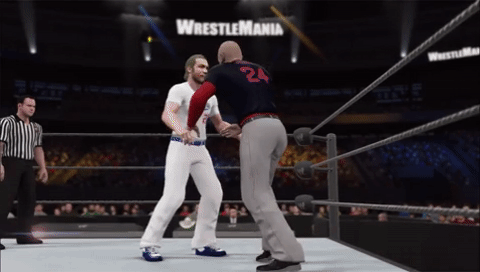Xander Bogaerts triple-slashed .288/.360/.522 in 580 regular-season plate appearances in 2018, which translated to a 133 wRC+ and 4.9 WAR. Both figures represented career highs. Like his teammate Mookie Betts, Bogaerts thrived offensively while largely maintaining a disciplined approach at the plate. This year, the 25-year-old swung at 61% of pitches he saw in the strike zone and just 43% of pitches overall. Both figures sit below league norms (just 16 of 140 qualified hitters swung at pitches in the zone less often this year) and are broadly consistent with Bogaerts’scareer figures. Bogaerts can, clearly, be a successful major-league hitter without taking a cut at every tempting fastball and slider he sees in the zone. He’s done it in each of past four years.
He did not, however, do so during this World Series. The only ball he struck really well in all five games was a second-inning double against Hyun-Jin Ryu in Game Two; his only other hits were a soft line-drive single in the ninth inning of Game Four that appeared to be almost the accidental result of a swing on which Bogaerts rolled over badly, and a single in the seventh in the clincher. Everything else he produced during this World Series was, for the most part, a weak ground ball or, in one horrible sequence of the 18-inning marathon that was Game Three, a ground out to second, a ground out to the pitcher, a ground out to the catcher, a strikeout swinging, and a ground ball into a double play. Bogaerts seemed simply unable to get his timing right for any consistent length of time in this World Series. Nor, until the final game, did Mookie Betts or J.D. Martinez.
Although all three Boston stars struggled to a greater or lesser extent during this Fall Classic — a matter examined by Jeff Sullivan earlier today — I’d like to focus on Bogaerts for much of this piece because his struggles seem, at least to me, the most pronounced — and most out of line with his performance during the regular season in 2018 (and, one presumes, his forthcoming performance in 2019). The first ground out in that horrible five-PA sequence I mentioned above, against Kenley Jansen in the ninth inning of Game Three, is instructive for its demonstration of Bogaerts’ Series-long inability to time up usually hittable pitches. (Please note: I’m not saying I could do this. I would cry if someone threw something past me at even 85.) The first pitch of the sequence was a sinker at 95 that Bogaerts took as a strike on the lower inside corner of the plate. Here it is:
Read the rest of this entry »


